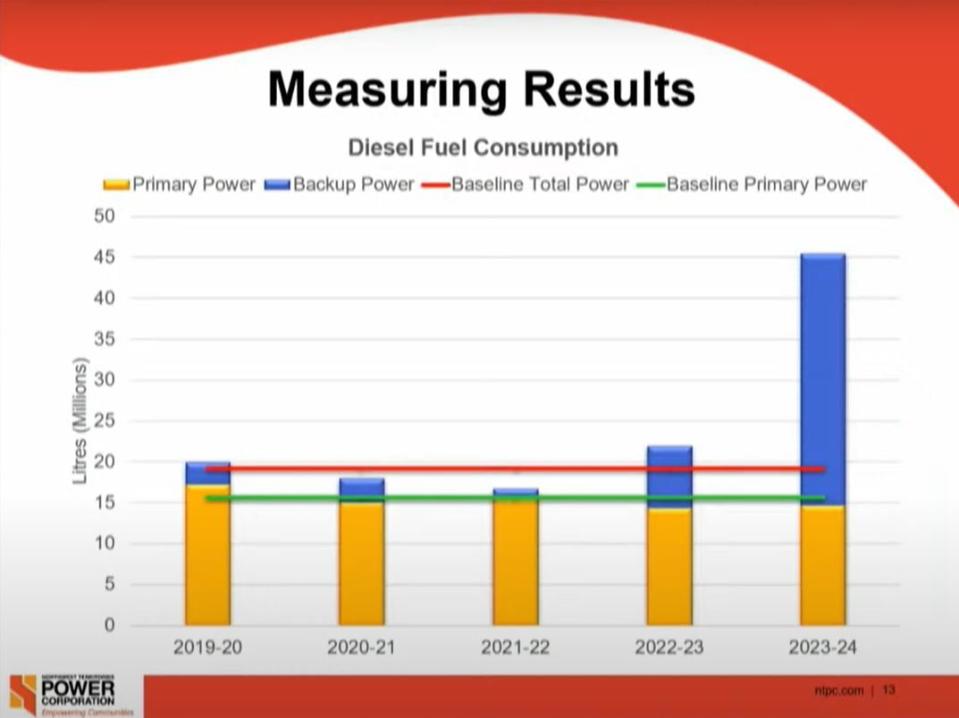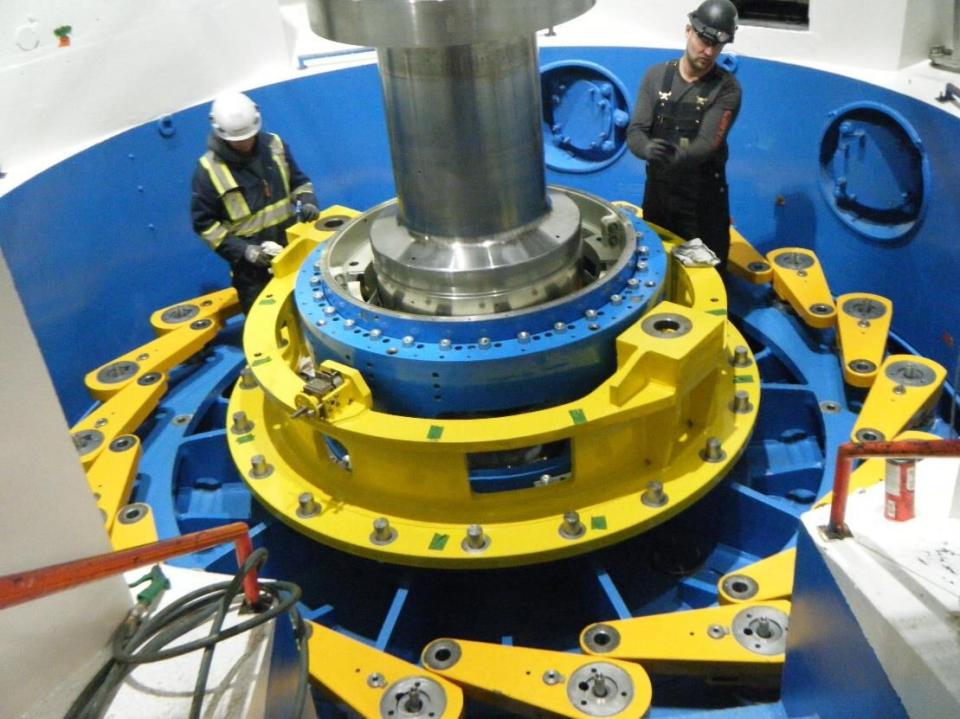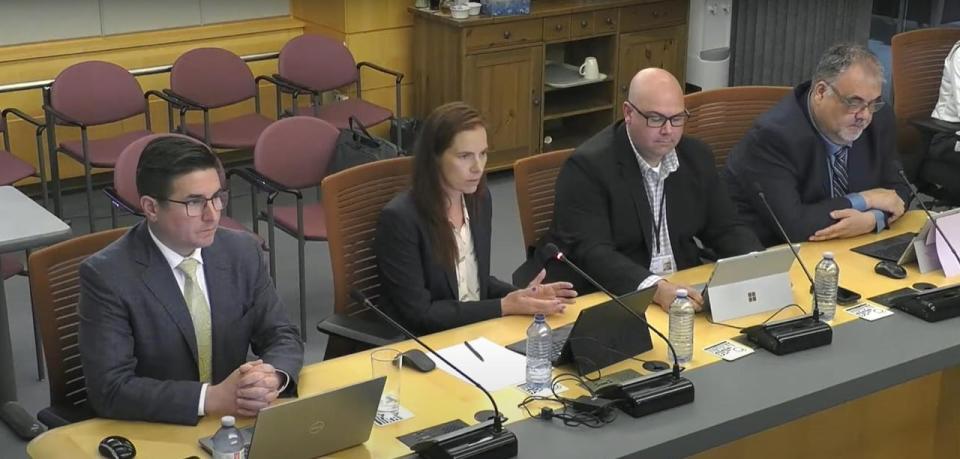NTPC forecast looks bleak with low water levels and skyrocketing diesel
What is the future of the Northwest Territories Power Corporation? With inflationary diesel prices, low water leverls, obstacles in transitioning to renewable energy and aging infrastructure some MLAs say the N.W.T. may be facing a crisis.
Cory Strang, Northwest Territories Power Corporation (NTPC) president and CEO and Caroline Wawzonek, the minister responsible for NTPC, met with MLAs on Monday to discuss the long list of challenges facing the power corp.
To start, the territory's diesel usage has grown astronomically in 2023-24.
Part of that comes from the low water levels affecting the Snare hydro system, the system that provides power to Yellowknife, Dettah and Behchokǫ̀. Water levels on the Snare are over three metres lower than average, Strang said.
The territory used around 45 million litres of diesel in 2023-24 year, nearly two thirds of which was supposed to be the backup source of energy. This is more than double what's been used in the past few years. Part of that is the result of low water levels affecting the Snare hydro system.

In past years, hydro accounts for approximately 98 per cent of the power provided to Yellowknife and surrounding areas, but lately it's beencloser to 50 per cent. That means the Jackfish power plant in Yellowknife, a backup source of diesel, has beenoperating regularly.
Despite the low water levels, the Snare hydro system appears to continue to be NTPC's long term plan based on Wek'èezhìı Land and Water Board documents that show it's renewed its water licence for another 39 years.
Another reason for the high diesel use has been the Taltson hydro system, which serves the South Slave, undergoing construction. That makes those South Slave communities completely reliant on diesel.
Doug Prendergast, spokesperson for the NTPC, said there's no timeline for when the work on the Taltston will be completed, but said in an email their team is making progress.
What about renewable energy?
Strang said the Inuvik wind turbine, an NTPC project, is an example of a successful renewable energy project.
The wind turbines, initially slated to cost $40 million in 2017, is now expected to cost $88 million according to Prendergast.
Prendergast attributed the high costs partially to regulatory delays and the COVID-19 pandemic, which was made worse by inflationary costs and challenges in building access roads. The project was expected to be operational by December 2020.
"Despite the cost escalations, the project still brings tremendous benefit," Prendergast said, adding the project is expected to reduce diesel use "in NTPC's largest off-grid community" by up to 30 per cent.
Strang said they're also discussing installing a third storage tank for liquid natural gas in Inuvik.
While still in the early stages, he said that could be transformative.
"Instead of trucking liquid natural gas all the way from B.C. it could be right across the street," he said.

But Strang said there are also major challenges around transitioning to a renewable energy system too quickly.
He said adding renewable energy options to a community that has a reliable power system and "is experiencing little to no growth" can impact the rates.
The committee meeting follows two requests the NTPC has submitted since February to increase rates, attributed to the high cost of diesel.
'I feel like we're facing a crisis'
Robert Hawkins, MLA for Yellowknife Centre, raised the alarm on the situation facing the NTPC and the territory.
"We can't throw another $15 to $30 million into subsidizing and we can't produce power, if we can't produce power and we don't have any new customers and we don't see any on the horizon," Hawkins said.
"At what point do we define this as a crisis? Because I feel like we're facing a crisis."
Wawzonek said solving the energy situation in the N.W.T. is one of the territory's most significant tasks.

"We can't continue to go on the way we've gone on for 50 years without a sense of urgency," she said.
Wawzonek said that making change will take significant cost and political will.
New board structure
In the committee meeting, Wawzonek also announced that the NTPC would be changing its governance structure to a hybrid model of representatives from the N.W.T. government and independent members.
The current structure, consisting solely of N.W.T. deputy ministers, has been criticized for lacking independence.
Wawzonek says she expects a formalized plan for the new structure over the course of the next year.


